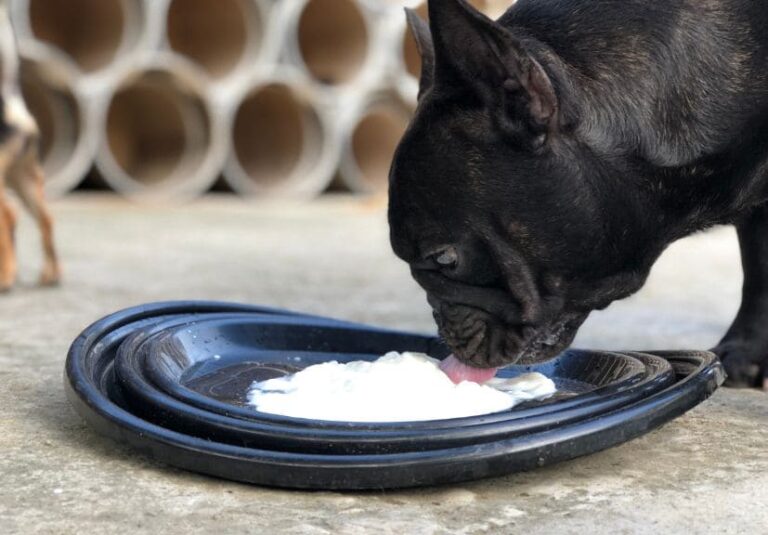Causes of Dog Anxiety
Dog anxiety can stem from various sources, each impacting a dog differently. Here are the primary causes of anxiety in dogs:
Separation Anxiety
Separation anxiety occurs when dogs become distressed when left alone. It is one of the most common forms of anxiety in dogs, especially those closely bonded to their owners. Dogs with separation anxiety may bark, howl, or even become destructive when left alone, attempting to escape or chewing on furniture. This behavior is often driven by a deep-seated fear of abandonment, which can be exacerbated by changes in their environment, such as a new home or their owner’s schedule.
Fear-Related Anxiety
Fear-related anxiety is typically triggered by specific stimuli, such as loud noises, unfamiliar people, new environments, or even certain objects. Fireworks and thunderstorms are common culprits, as the sudden, loud sounds can terrify many dogs. Fear-based anxiety can also develop if a dog has previously had a negative experience with a particular stimulus, causing them to associate it with fear.
Age-Related Anxiety
As dogs grow older, they may develop cognitive issues similar to human dementia, such as canine cognitive dysfunction syndrome (CCDS). This condition causes disorientation, memory issues, and even behavioral changes, leading to increased anxiety. Dogs with CCDS might forget familiar routines, act confused in well-known spaces, or struggle to remember commands they once knew.
Past Trauma or Poor Socialization
Dogs that have experienced trauma, especially rescues or those from abusive backgrounds, often carry emotional scars that manifest as anxiety. Lack of socialization can also contribute; to dogs not being exposed to diverse environments or people early in life may struggle with anxiety when they encounter new situations. These dogs may exhibit extreme caution, fear aggression, or nervousness around strangers or in busy environments.
Symptoms of Dog Anxiety
Recognizing anxiety symptoms in dogs can help owners respond appropriately. Here are the most common signs of dog anxiety:
Behavioral Signs
Anxious dogs may display a range of behavioral changes, including excessive barking, whining, restlessness, or aggression. In severe cases, dogs may even become destructive, chewing on furniture, digging at doors, or trying to escape confined spaces. Behavioral signs can sometimes be mistaken for disobedience, but these actions are often a dog’s way of communicating their discomfort.
Physical Symptoms
Physically, anxious dogs may pant, tremble, pace, or engage in excessive self-grooming, such as licking their paws. Some may salivate more than usual or experience gastrointestinal issues, such as diarrhea. Physical signs can indicate acute anxiety, often triggered by something immediate, like a loud noise or an unfamiliar visitor.
Body Language Cues
Dogs communicate much through their body language. An anxious dog might display signs like flattened ears, a tucked tail, avoidance of eye contact, and cowering or shrinking behavior. Dilated pupils, lip licking, or yawning out of context can also signal stress.
Changes in Appetite or Sleep Patterns
Anxiety can disrupt a dog’s appetite and sleeping habits. Some dogs may eat less or stop eating altogether during stressful periods, while others may have difficulty settling down to sleep or may seem restless at night. Changes in these basic habits can be key indicators that a dog is struggling with anxiety.
Solutions for Dog Anxiety
Addressing dog anxiety requires a multifaceted approach, including behavior modification, lifestyle changes, and, in severe cases, professional help.
Behavioral Training and Desensitization
Behavioral training involves teaching dogs to react calmly to anxiety triggers. Desensitization is a process where dogs are gradually exposed to their anxiety-inducing stimuli, starting at a low level and increasing exposure over time. For example, if a dog fears loud noises, you might play recordings of thunder at a low volume and gradually increase the volume as they become accustomed to it. Counterconditioning is often used alongside desensitization, rewarding the dog with treats or praise whenever they remains calm during exposure.
Providing a Safe Space
Dogs with anxiety benefit from having a safe, comfortable area where they can retreat when feeling overwhelmed. This space could be a quiet room or a designated crate with familiar bedding and toys. The aim is to create a haven that minimizes stimuli and provides comfort. Using pheromone diffusers or calming scents, like lavender, can enhance the calming effect of this space.
Regular Exercise and Mental Stimulation
Exercise plays a critical role in managing anxiety by helping dogs burn off excess energy and release endorphins, which naturally boost mood. Physical activities like daily walks, playtime, and even interactive games (e.g., fetch or tug-of-war) can reduce anxiety. Mental stimulation, such as puzzle toys, obedience training, or scent games, is equally important and helps keep a dog’s mind engaged.
Natural Calming Aids
Natural aids, such as CBD oil, calming treats, or pheromone sprays, may help alleviate anxiety symptoms. CBD oil has gained popularity as a natural remedy, as it can help reduce stress without sedating the dog. Calming treats often contain ingredients like chamomile, valerian root, or melatonin, known for their relaxing effects. Pheromone diffusers mimic the calming scent of a mother dog, which can create a soothing environment for anxious dogs.
Professional Help
For dogs with severe or persistent anxiety, consulting a professional may be necessary. A veterinarian can help assess whether the anxiety is linked to a medical condition, while a certified animal behaviorist can develop a customized treatment plan. In some cases, a trainer experienced with anxiety disorders in dogs may be able to assist by implementing behavior modification techniques.
Medication Options (if needed)
In cases where natural methods and behavior training do not suffice, medication may be recommended. Anti-anxiety medications, such as SSRIs or benzodiazepines, are prescribed for short-term use or in particularly stressful situations (e.g., travel or fireworks). Always consult a veterinarian before starting any medication to discuss potential side effects and ensure proper usage.
Tips for Preventing Anxiety in Dogs
Prevention is essential to help minimize anxiety in dogs:
- Socialization from an Early Age: Exposing puppies to a range of people, animals, and environments can make them more adaptable and confident.
- Consistent Routines and Schedules: Regular feeding, exercise, and sleep schedules provide dogs with a sense of stability, helping them feel secure.
- Regular Vet Check-Ups: Routine health checks can help detect underlying health issues that might contribute to anxiety, such as thyroid imbalances or chronic pain.
- Positive Reinforcement to Build Confidence: Rewarding desired behaviors helps boost a dog’s confidence and can reduce anxiety over time.
Conclusion
Understanding dog anxiety allows pet owners to respond thoughtfully and effectively. By recognizing the root causes, identifying signs of stress, and implementing a combination of strategies, you can help your dog feel more secure and comfortable. Remember, patience is key, as managing anxiety takes time and consistency. For cases of severe anxiety, seeking professional help can make a significant difference in improving your dog’s quality of life.
FAQs: Additional Insights on Dog Anxiety
Can anxiety in dogs lead to physical health issues?
Yes, chronic anxiety can weaken a dog’s immune system, making them more susceptible to illnesses. Prolonged stress may also contribute to heart issues and digestive problems.
Are certain dog breeds more prone to anxiety?
Yes, some breeds, such as Border Collies, German Shepherds, and Bichon Frises, are more likely to experience anxiety due to their high energy levels and strong bonds with humans.
How long does it take to see improvements in an anxious dog?
The timeline varies based on the severity of the anxiety and the methods used. Mild cases may show improvement in weeks, while severe cases might take several months or longer.
Is there a specific age when dogs are more likely to develop anxiety?
Anxiety can develop at any age, but older dogs are at a higher risk of anxiety due to age-related cognitive decline and health issues.
Can I use essential oils to help calm my dog?
While some essential oils (like lavender) can have calming effects, others can be toxic to dogs. Always consult a vet before using any oils, as improper use can harm your pet.




